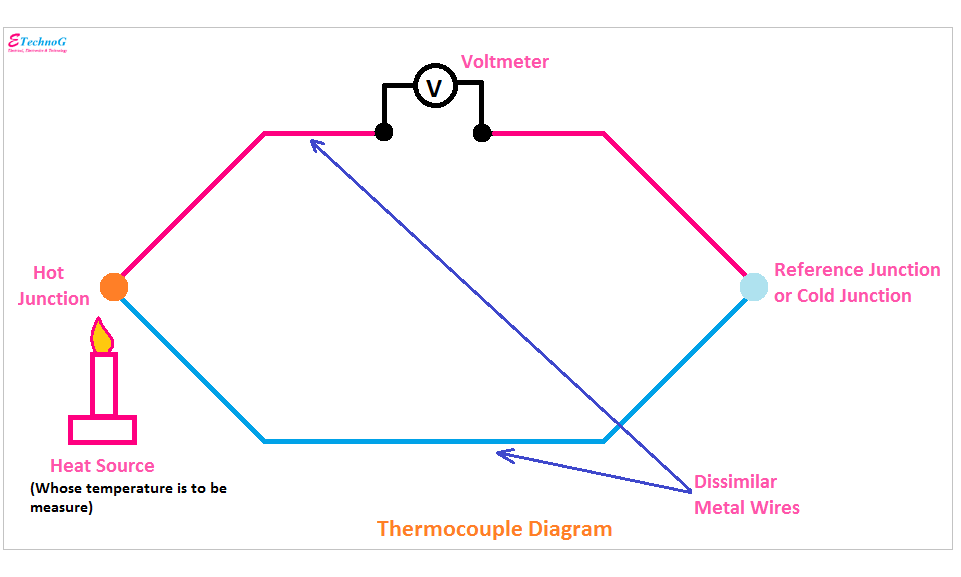Thermocouple Diagram, Circuit, Construction, Applications
The thermocouple is a temperature-sensing device used in various applications. It converts the temperature variation into electric voltage. A thermocouple works on the principle of the thermoelectric effect. In this article, we are going to see the Thermocouple Diagram, Circuits, and applications.
The thermocouple is also called an Active Transducer because it does not require any external power supply for its operation. It can generate electric voltage itself although it is very small in magnitude. The thermocouple is very simple in construction, cost-effective, and it can measure a wide range of temperatures.
A thermocouple consists of two metal wires or legs and they joined at one end to create a junction. When that junction experiences a variation in temperature it produces an electric voltage. Generally, thermocouples are designed in such a way that they can sense or measure the temperature difference from its normal environmental temperature. That means it takes its environmental temperature as the reference temperature. But when we are going to understand its working principle, we always make two junctions. One of them was put into a cold temperature as a reference.
Thermocouple Diagram
Here you can see the diagram of thermocouple to understand its working principle.
Here, you can see two wires of different metals are joined in both ends. So there are two junctions are formed. One junction is placed in a hot temperature environment as a measuring junction and another one is placed in a cold temperature environment as a reference junction. A voltmeter is connected to measure the generated voltage.
This works on the principle of the thermoelectric effect and the Seebeck effect. As the two different metals experience a temperature variation, they produce an electric potential difference. When the circuit is closed, a very low amount of current will flow through both metal wires.
Thermocouple Construction
Here you can see the internal construction of thermocouple.
You can see two wires of different metals are joined at one end and placed inside a metal Inconel sheath. After placement, the metal sheath is filled with magnesium oxide powder to prevent the junction from external damage, and vibrations. The magnesium oxide also helps to enhance the heat transfer between the junction and its environment.
There are different types of thermocouples available according to their unique characteristics such as temperature range, chemical resistance, vibration resistance, durability, and application compatibility. Thermocouple types J, K, E, and T are the base metal thermocouples, and they are suitable for low to medium-temperature applications. Thermocouple types R, S, and B are the Noble Metal thermocouples, and they are suitable for medium to very high-temperature measurement.
Thermocouple Circuit Diagram
There is nothing more in the circuit diagram of Thermocouple as it is very simple in construction. When it is connected to an electrical or electronic circuit a preamplifier and amplifier circuits are connected to its output because it produces a very low voltage and current that can not operate the electrical or electronic circuit.
The status of a good or bad thermocouple can be checked by the Resistance test, Open Circuit Test, and Closed Circuit Test. In the resistance test, the resistance between the two terminals of the thermocouple is measured. Lower resistance indicates its working status is good. In the open-circuit test, the output voltage is measured by applying a low temperature to its junction. A higher output voltage indicates it working well.
Thermocouple Applications
There are a wide range of applications of thermocouple,
- Thermocouples are used in metal processing industries such as steel, and iron industries to monitor production temperature.
- Thermocouples are used in HVAC Systems to monitor ambient temperature, room temperature, etc.
- Thermocouples are used in temperature control devices such as Air Conditioners, Refrigerators, and Heat pumps for automatic temperature control systems.



